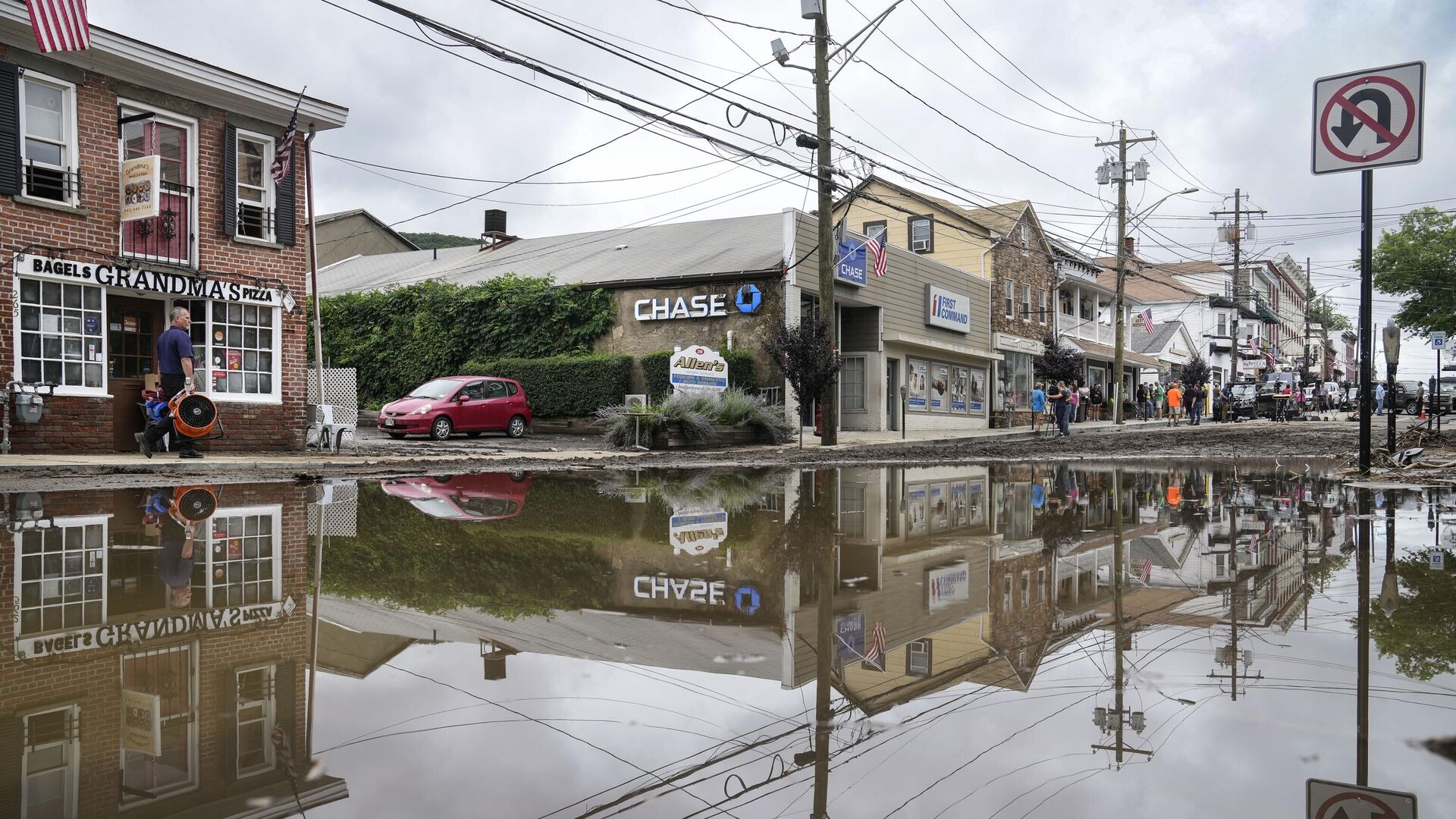Video: One Dead in Vermont as Northeast US Faces Down ‘Potentially Catastrophic’ Rains

© AP Photo / John Minchillo
Subscribe
Soaking rains across the northeastern United States early this week could be some of the worst seen in more than a decade. Flooding has already claimed one life in Vermont, which is destined to be the epicenter of the deluge.
The National Weather Service (NWS) gave a “red” colored risk of catastrophic flooding on Sunday extending from Washington, DC, nearly 500 miles north to the US-Canada border. At one point on Monday morning, the entire state of Vermont was under a flash flood warning, along with most of New Hampshire, where the worst is expected to be concentrated.
Widespread and extreme flash flooding is possible across interior New England today as heavy rains continue to fall. Multiple Flash Flood Warnings are in effect and many roads are washed out with another 3-5 inches of rain to come. #TurnAroundDontDrown pic.twitter.com/a5B6nayP89
— National Weather Service (@NWS) July 10, 2023
Meteorologist Matthew Cappucci called the atmospheric setup in the northeastern US a “moisture fire hose,” explaining that storms passing through the area “would be like wringing out a washcloth: all that moisture [would be] squeezed out. As a result, torrential downpours are likely.”
While some areas will see one or two rounds of storms passing through, a rotating low-pressure system will ensure that Vermont faces as much as 24 hours of continuous heavy rainfall.
The NWS office in Burlington warned on Monday morning that residents should "expect significant to potentially catastrophic widespread flash flooding through Monday evening, with possible impacts not seen since Irene."
Hurricane Irene was a powerful, destructive tropical cyclone that swept along the eastern coast of the United States in August 2011, leaving a swath of destruction stretching from South Carolina to Maine. In Vermont, every stream and river burst its banks, tearing apart so many bridges and roadways that many towns became isolated from the outside world for weeks and relief supplies had to be flown in via helicopter. Three Vermonters died in the storm, which killed 44 in the US overall.
Up to an inch of rain is forecast to fall every hour in Vermont, which has already received some 3 inches of rain in the last 24 hours.
The storms began on Sunday, dumping several inches of rain across the region. Chalfont, Pennsylvania, recorded 8.01 inches on Sunday, with West Point, New York, home of the US Military Academy, recording 6.17 inches of rain falling in just three hours. For Reading, Pennsylvania, it was the wettest July day on record since before the US Civil War, which was fought from 1861 to 1865.
Route 218 from cornwall to West point is gone pic.twitter.com/zdxMJAkQ7M
— NsfwWx ❄️ (@NsfwWx) July 10, 2023
A woman in her 30s died in New York’s Hudson Valley as she was swept away by floodwaters, reportedly while trying to carry a family pet through rapidly flowing water.
“Last night was complete chaos,” Steven Neuhaus, the county executive of Orange County, New York, told US media on Monday.
Footage posted on social media showed bridges swept away by floodwaters, roadways destroyed by landslides, and flood waters so high that only the tops of cars were visible.
Ludlow and Londonderry VT very hard hit. Here too being compared to Irene. Water to car roofs. #flooding
— eweather (@Eweather13) July 10, 2023
📷:Judy Clough & Shauntay Morsey pic.twitter.com/8uzTZTkOGu
Holy Shit... Highland Falls and West point under water @NBCNews @ABC7 @NY1 @NBCNews @NWSNewYorkNY pic.twitter.com/Y5TYjeIo4E
— NsfwWx ❄️ (@NsfwWx) July 9, 2023
Such extreme weather events have become more common in recent years, with numerous cities around the globe seeing record rainfall that has triggered catastrophic and deadly flooding from Zhengzhou, China, to New York City, to Germany’s Ahr Valley. Meteorologists and climatologists point to a rapidly warming global climate as the culprit, noting that warmer air holds more moisture, which allows stronger storms to form, and warmer waters gives hurricanes added fuel to become super-powerful.

